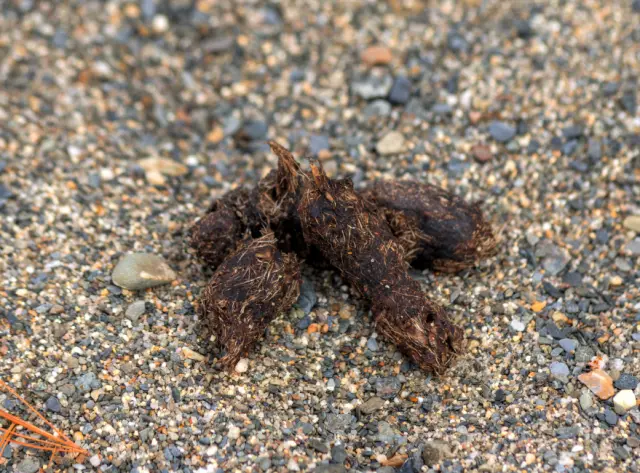Coyotes, with their elusive nature and adaptability, are a common sight across various landscapes in North America, from rural countryside to urban neighborhoods. As with many wild animals, questions often arise about their droppings. What does coyote poop look like? Is it dangerous? In this blog post, we’ll address some frequently asked questions about coyote feces and provide tips for identification.
1. What does coyote poop look like?
Coyote feces, also known as scat, can vary in appearance depending on factors such as diet and habitat. Generally, coyote poop is tubular in shape and resembles that of a medium-sized dog. It typically ranges from ¾ to 1 ½ inches in diameter and 3 to 4 inches in length. The color of coyote scat can vary from dark brown to grayish-black, often depending on the animal’s diet.
2. Are there any distinguishing features of coyote poop?
Yes, there are several characteristics that can help identify coyote scat:
- Shape and Size: Coyote feces are usually elongated and somewhat segmented, with tapered ends.
- Contents: Coyote scat may contain remnants of bones, fur, seeds, or undigested food, reflecting the coyote’s omnivorous diet.
3. Is coyote poop dangerous?
While coyote feces itself is not inherently dangerous, it can pose health risks due to potential contamination from parasites and diseases. Coyotes are known carriers of diseases such as rabies and canine distemper. Therefore, it’s important to avoid direct contact with coyote scat and to practice proper hygiene when cleaning up areas where coyotes have defecated.
4. How can I safely clean up coyote poop?
If you encounter coyote feces on your property, take precautions to avoid direct contact. Wear gloves and use a shovel or scoop to carefully collect the scat, placing it in a sealed plastic bag for disposal. Clean the area with a disinfectant solution to reduce the risk of contamination.
5. What should I do if I find coyote poop in my yard?
If you find coyote feces in your yard, it’s important to take steps to discourage coyotes from returning to the area. Secure garbage cans with tight-fitting lids, eliminate potential food sources such as pet food left outside, and remove any attractants that may entice coyotes to your property.
6. Should I be concerned if I find coyote poop in or around my home?
While the presence of coyote feces near your home may indicate that coyotes are frequenting the area, it does not necessarily mean that they have entered your home. However, it’s essential to inspect your property for potential entry points, such as gaps in fences or around outbuildings, and to take steps to secure them to prevent coyotes from gaining access.
By understanding what coyote poop looks like and how to safely clean it up, you can effectively manage coyote activity on your property while minimizing health risks. If you have concerns about coyote presence or need assistance with cleanup, consider contacting a professional wildlife removal service for help.
MORE POSTS: What does raccoon poop look like?
Ankurman Handique
Latest posts by Ankurman Handique (see all)
- How to Reach Kaziranga National Park: A Complete Guide - June 29, 2024
- What animals are found in Puerto Rico? - February 23, 2024
- What does coyote poop look like? - February 20, 2024

